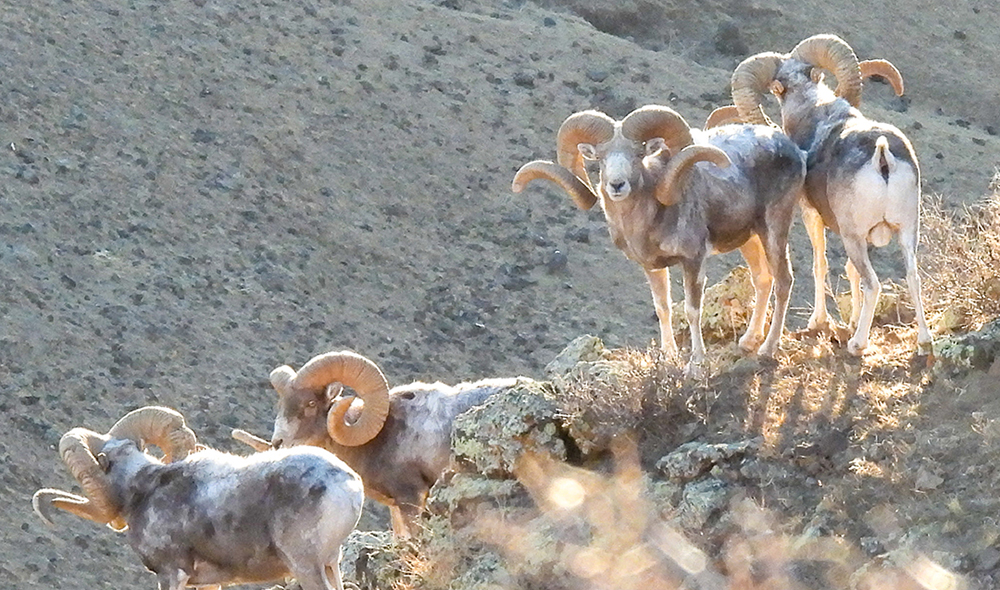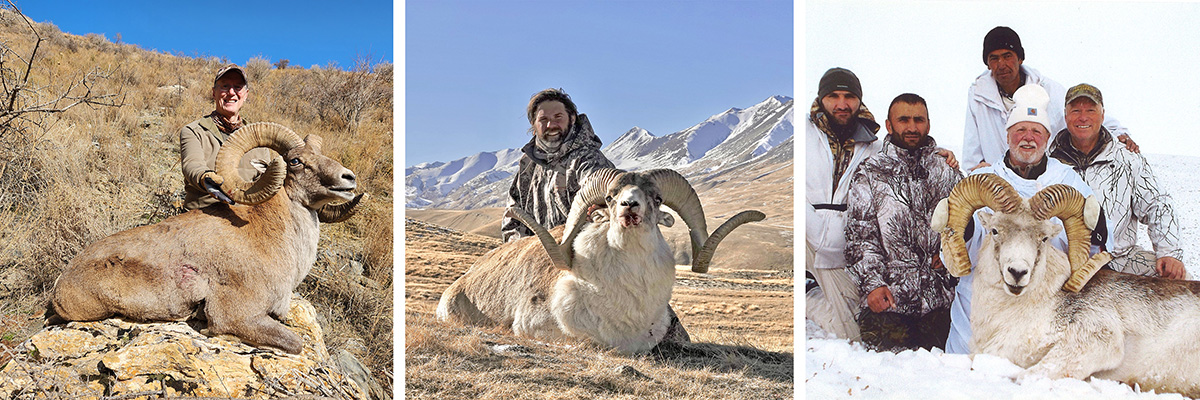
Central Asia's epic mountains and valleys are some of the most biodiverse places in the world for caprinae. This is truly a special place, from massive ibex and unusual saiga antelope to regal markhor and multiple species of argali, the planet's largest wild sheep. And it is home to a growing mountain wildlife conservation movement aided by the Wild Sheep Foundation (WSF).
A highlight of the Wildlife Professional's Meeting at the 2024 Sheep Show was the International Wild Sheep & Wild Goat Conservation presentation hosted by WSF's International Sheep & Goat Conservation Director Kurt Alt. "There are some very exciting things happening for mountain ungulates in Central Asia, and we are happy to host some of the incredible biologists and people responsible for the work done in this remote corner of the world," Alt said.
Several key countries are working toward creating a wild sheep working group modeled after North America's successful collaboration. In addition, they are working to foster better communication with the U.S. Fish & Wildlife Service officials for trophy exports and to create a North American Model of Conservation actions in the massive, remote region.
Dr. Sukhiin Amgalanbaatar of the Mongolian Argali Wildlife Research Center said the impact of science-based hunting is essential for Mongolia's wildlife. "Legal, science-based conservation hunting can be a positive for wildlife and helps create economic incentives for local people to conserve wildlife. It's important that we also use the hunting-based model to help us continue research on argali," he said.
Kazakhstan Wildlife Foundation directors were present and shared their goals for future wildlife conservation initiatives. "The first thing is we want to fully introduce the new modern approaches for scientific-based conservation hunting in Kazakhstan," said Orynbassar Shaimukhanbetov, the organization's President & CEO. He said working with WSF has been a positive step in the right direction. "They can help guide us and show us the best ways of wildlife management, so we don't have to create the bicycle. They already have it and can teach us how to drive it properly."
Shaimukhanbetov said scientists in his country work hard to research wildlife and look forward to working toward opening hunting-conservation opportunities.
Various hunting organizations recognize various argali subspecies, but the International Union for the Conservation of Nature acknowledges the following.
- Altai Argal
- Kazakhstan Argali
- Goti Argali
- Tibetan Argali
- China Argali
- Tian Shan Argall
- Karatau Argall
- Moro Polo Sheep
- Severtzov’s Argall
"There's a wide range of argali in Central Asia, and we have an interest in expanding conservation opportunities for them in our nation," said Kazakhstan Wildlife Foundation Executive Director Albat Muzbay. Recent surveys from Kazakhstan show 13,083 Kazakhstan argali, 2657 Tyan Shan argali, 711 Karatau argali, and 2,412 urial.

Three argali subspecies were recognized in the Mountain Monarchs portion of the 2024 Ram Awards during this year's Sheep Show®. From left: Severtzov Argali (James Lines), Tian Shan Argali (Jason Soulliere), and Pamir Argali (Larry Higgins).
Muzbay said challenges include that wild sheep research methods are different, and scientists have different approaches. "There are different kinds of data and analysis and a lack of a platform for exchanging knowledge between argali specialists. We need to work toward better access to information on wild sheep status, wildlife legislation, and conservation programs in neighboring countries," he said.
He noted this would be a significant positive of a Wild Sheep Working Group in the region.
WSF's work in the region is multi-dimensional, ranging from working with the U.S. Fish and Wildlife Service on permitting issues to bring scientists, hunters, and outfitters together for scientific hunting-based conservation.
"We're proud that we have three WSF affiliates in central Asia. We have the Mongolian Wildlife Foundation, which has been an affiliate since 2019, and in 2023, we brought on the Mongolian Wildlife Argali Research Center and the Kazakhstan Wildlife Foundation. We're starting to see some very positive things happening in Asia," said Kurt Alt.
Alt said having a delegation of scientists from Mongolia and Kazakhstan at the Sheep Show was an important step. "They enjoyed the show and connecting with other researchers, and it was a great opportunity to see the potential for hunter-based conservation and economic incentives that they can help bring back to their countries. These are very knowledgeable and sincere scientists who are doing good things in their respective countries, and we are honored to be working with them."
With mountains that tower over the Rockies and a far more diverse range of sheep and goat species than North America, this region of Asia has much to offer for hunters and wildlife adventurers.
WSF is committed to working with local scientists to help manage their nation's wildlife in a way that creates more avenues for scientific, conservation-based international hunting opportunities and stewardship of these great resources.
The Wild Sheep Foundation (WSF), based in Bozeman, Mont., was founded in 1977 by sportsmen and other wild sheep conservationists. WSF is the premier advocate for wild sheep, having raised and expended more than $145 million, positively impacting these species through population and habitat enhancements, research and education, and conservation advocacy programs in North America, Europe, and Asia "To Put and Keep Wild Sheep On the Mountain”. In North America, these and other efforts have increased bighorn sheep populations from historic lows in the 1950s-60s of 25,000 to more than 85,000 today. WSF has a membership of more than 11,000 worldwide.
Tags: Argali, International